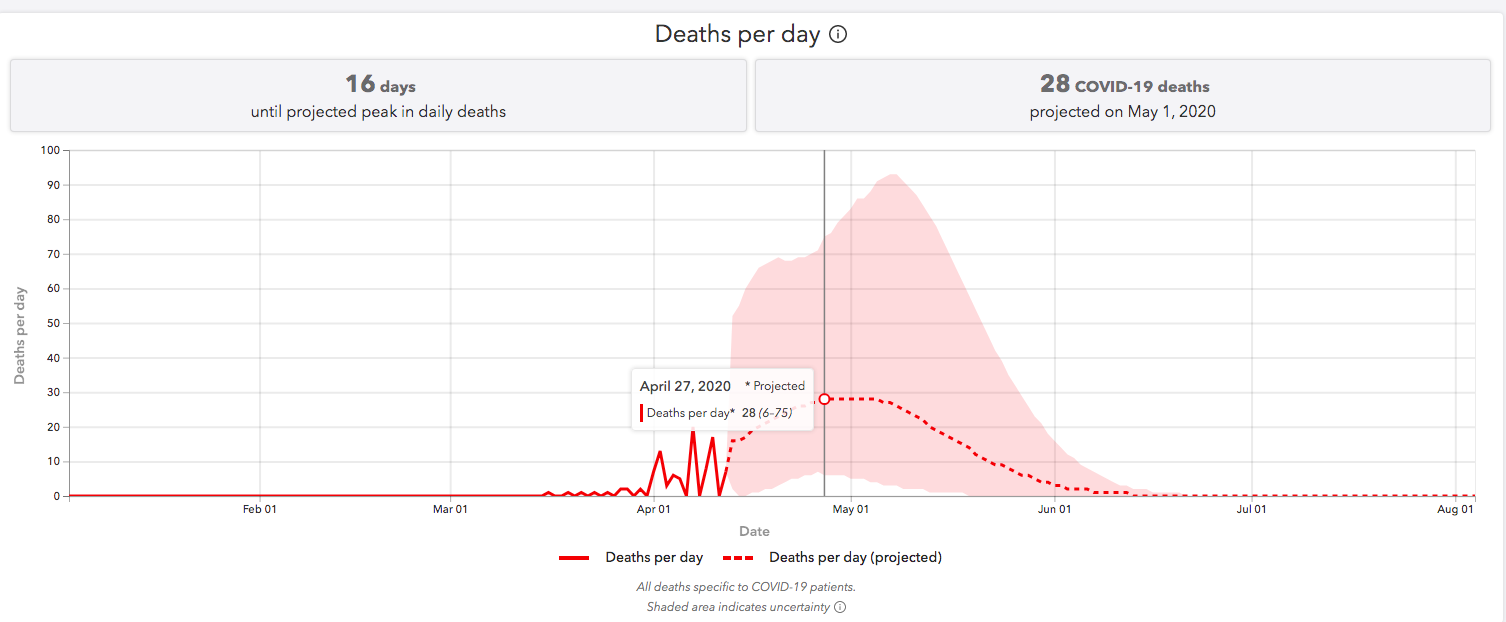Predictions change for COVID-19 peak, available resources
Published 1:20 pm Thursday, April 16, 2020
|
Getting your Trinity Audio player ready...
|
As new data becomes available, the Institute for Health Metrics and Evaluation (IHME) is predicting Kentucky’s peak coronavirus outbreak and need for resources is nearer than initially reported.
IHME is an independent global health center at the University of Washington.
The center created a database detailing COVID-19 projections, including demand for hospital services and deaths per day, in the U.S. assuming full social distancing through May 2020.
According to the IHME COVID-19 database, Kentucky is well-equipped for its peak of the novel coronavirus, but still, hundreds more are likely to die from the virus.
That peak, originally predicted for May 16, is now expected to hit around April 29.
During that time, more than 1,000 of the state’s 6,210 beds, including 257 of the 448 ICU beds will be needed to care for COVID-19 patients. There is no shortage of beds expected in Kentucky.
When Kentucky reaches its peak of cases in just more than two weeks, the database predicts there will be 28 virus-related deaths on that day and for approximately a week following that peak.
The database predicts there will be 1,067 virus-related deaths in Kentucky by Aug. 4.
The database makes predictions based on the possible outcomes of strict implementation of four key social distancing measures: a stay-at-home order, educational facilities closed, non-essential services closed and travel severely limited.
According to researchers, Kentucky has only implemented two of those measures. The state closed educational facilities March 20, and less than a week later, on March 26, closed all non-essential services.
So far, a stay-at-home order and severe travel limitations haven’t been implemented in Kentucky.
“Our projections assume that Kentucky will implement 3 out of 4 social distancing measures by April 19,” the researchers wrote.
“Our model is designed to be a planning tool, and is informed by the shape that other COVID-19 outbreaks are taking, in terms of deaths, around the world and across the US,” researchers wrote. “The data being used in these forecasts come from local and national governments, hospital networks like the University of Washington, the American Hospital Association, the World Health Organization, and a range of other sources. The model is updated regularly as new data are available, in order to provide the most up-to-date planning tool possible.”
The database indicates it’s been at least four days since the U.S. hit its peak on April 10, when there was a shortage of nearly 3,500 beds and more than 7,000 ICU beds. The database predicted there would be 2,150 deaths attributed to COVID-19 on Monday.
The first case of COVID-19 was reported in the U.S. Jan. 22, and since then, there have been 579,005 COVID-19 cases in the U.S. resulting in 22,252 deaths as of April 10, according to the Centers for Disease Control and Prevention.
“These estimates assume the strong continuation of statewide social distancing measures in places where they are already enacted, and future adoption within the next seven days in states without them,” researchers wrote. “If such policies are relaxed or not implemented, the U.S. could experience a higher COVID-19 death toll and hospital burden than what our models currently predict.”
The total number of deaths in the U.S. predicted by the database has decreased to 68,841 by Aug. 4. Previously, IHME researchers predicted more than 93,000 deaths in the same time frame.





